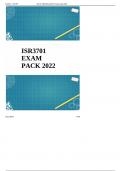Lecture notes
BTEC Applied Science Unt 2A Coursework
- Module
- Btec applied science
- Institution
- Btec Applied Science
Full, in-depth BTEC Applied Science Unit 2A - Undertake titration and colorimetry to determine the concentration of solutions. Full marks and achieved a Distinction.
[Show more]












